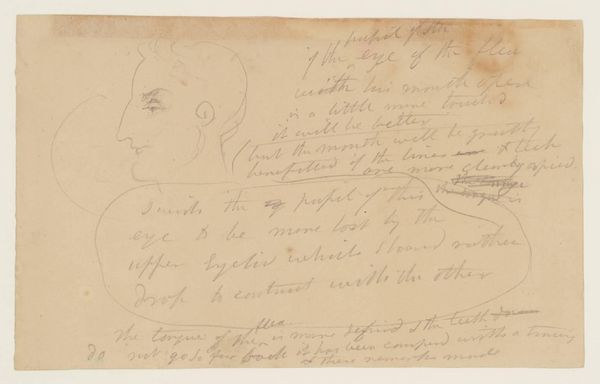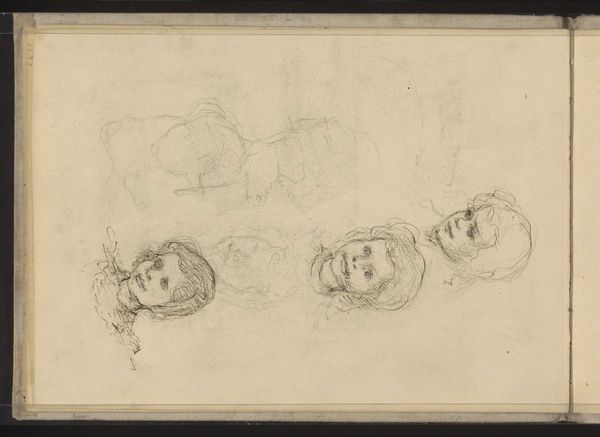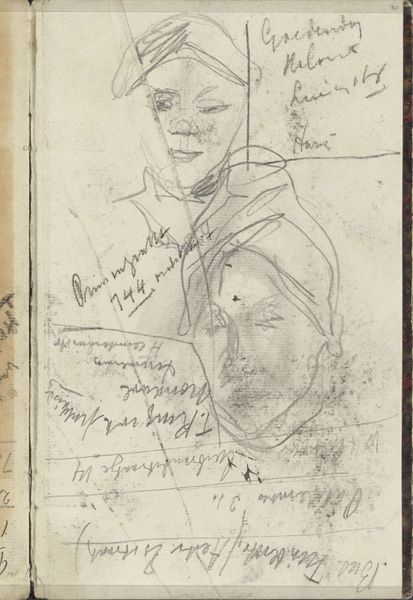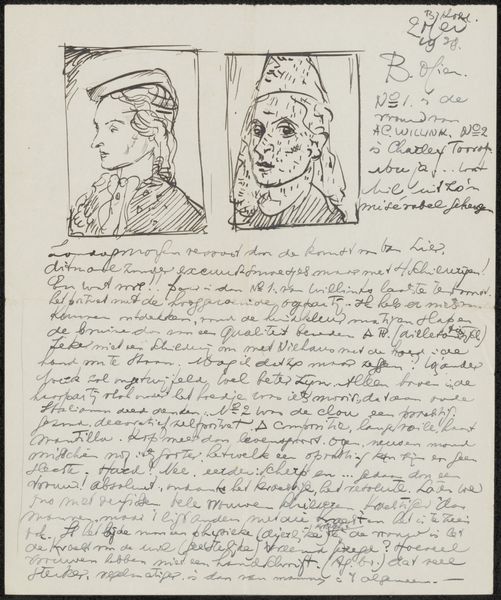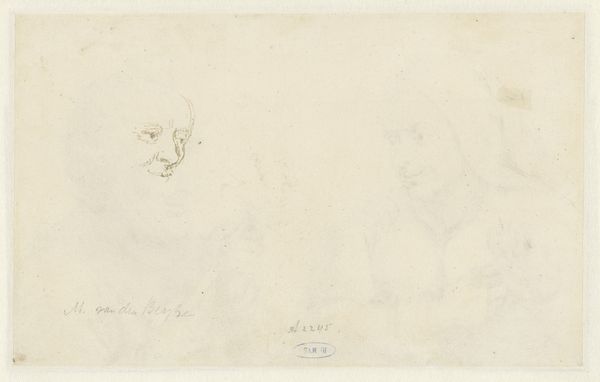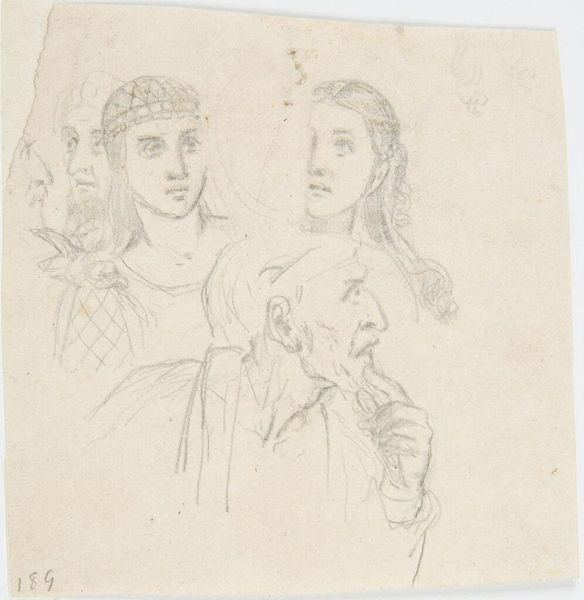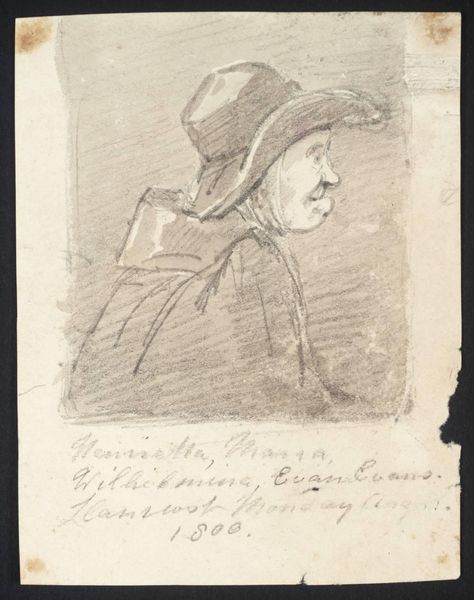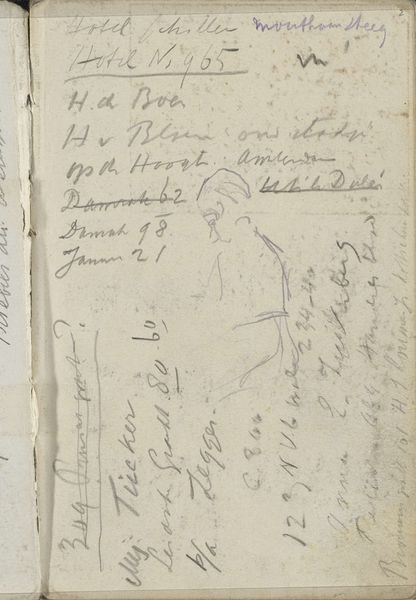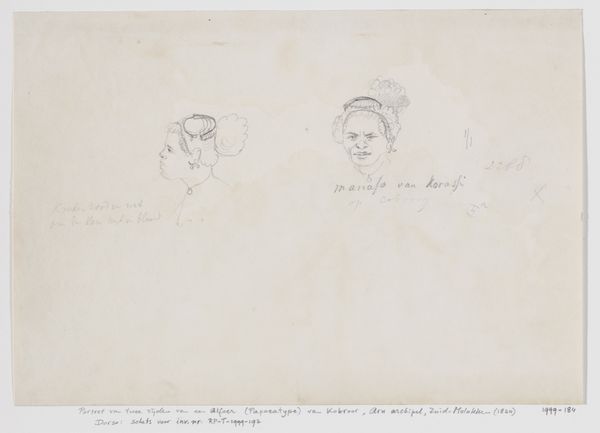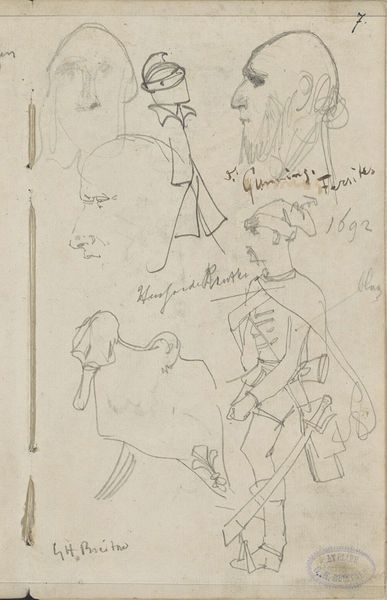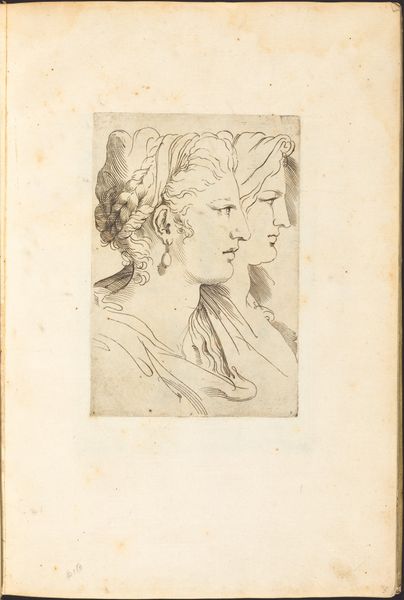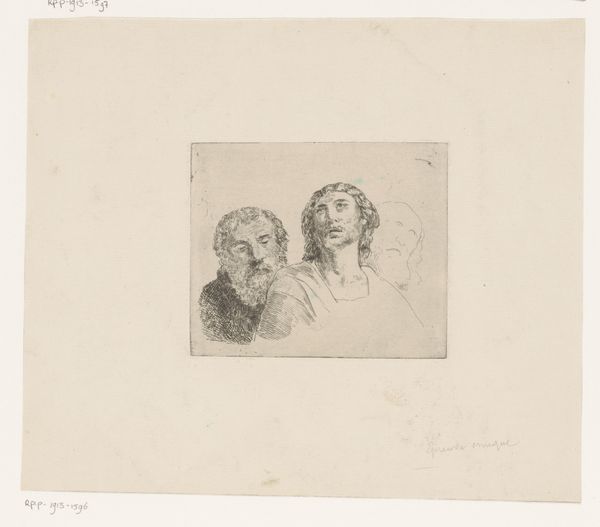
Copyright: Rijks Museum: Open Domain
Curator: Jozef Israëls, primarily known for his poignant depictions of Dutch peasant life, is the artist behind this pencil drawing, titled "Kop van een meisje en van een man met een hoed," dating roughly from 1885 to 1911. It's currently housed here at the Rijksmuseum. Editor: It feels very intimate, almost like a stolen glance into someone’s private sketchbook. The soft pencil strokes create a sense of immediacy. They both look serious or perhaps preoccupied. Curator: Israëls often focused on capturing the inner lives of his subjects, and his involvement in social realism underscores the context of his period, with its focus on authentic portrayals of the human condition. Pencil enabled him an immediacy well-suited for this artistic goal. Editor: I'm particularly struck by the woman's hat. It’s rendered so delicately. There’s a certain defiance there, don't you think? Considering societal expectations for women at the time, this might suggest more independence and perhaps even question established gender roles within her community. Curator: You're right, the clothing hints at a desire to assert individual identity. The looseness of his technique avoids idealization and shows reality, reflecting his commitment to capturing his era. We also see elements of impressionism, visible in the light effects. This allowed for portraying ephemeral light and everyday subject matter. Editor: And note how the light catches the woman’s face compared to the young girl's. The hat casts one in shadow but highlights the cheekbones of the other. It evokes class, as well as the stages of their lives: expectations versus reality. The visible, German writing underneath also leads me to question where and when exactly the artwork was made and displayed to the public. The context is as important as the work. Curator: It's important to also contextualize his background: as a Jewish artist who experienced antisemitism, he challenged exclusionary systems, creating his paintings against this environment. Editor: Right. With the context you've added, this feels less like just a portrait and more like a subtle form of social commentary, prompting viewers to question these conditions and consider those who have been pushed to the margins. It urges engagement, hopefully provoking some empathy, in viewers today as much as in its time.
Comments
No comments
Be the first to comment and join the conversation on the ultimate creative platform.
